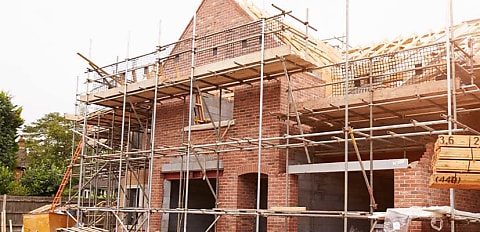New data from the Australian Bureau of Statistics (ABS) has shown that 12,065 dwellings were approved in January 2023, the smallest number of approvals in over 10 years.
While part of the weakness was a reversion from the 15.3 per cent spike in December, the figures continue a downward trend in approvals, which were already down 3.1 per cent from Q3 to Q4 2022.
The ABS data showed total dwelling approvals decreased in NSW (-49.0 per cent), Victoria (-38.6 per cent), Tasmania (-31.7 per cent), Western Australia (-7.9 per cent), and South Australia (-6.5 per cent).
Only Queensland recorded an increase (25.6 per cent), driven by a number of apartment developments approved in January. Approvals for private sector houses fell in all states.
Daniel Rossi, ABS head of construction statistics, said: “Approvals for private sector houses fell by 13.8 per cent, the fifth consecutive drop, to be the lowest result recorded since June 2012.
“The more volatile, private sector dwellings excluding houses series, fell 40.8 per cent, following a 41.9 per cent rise in December”.
The value of total building approvals fell 18.6 per cent (to $10.6 billion), following a 1.0 per cent increase in December.
An ANZ Research note explained that while Australia’s strong expected net migration through this year will limit the total decline in building approvals, falling home prices and rising rates will reduce appetite for new dwelling developments.
“We expect construction activity to fall 3.4 per cent in 2023 and 8 per cent in 2024, as backlogs ease and demand softens,” it said.
HIA senior economist Tom Devitt suggested this would not be the end of the decline in approvals.
“The adverse impact of last year’s cash rate increases is still to fully flow through to the official data,” he said.
“The higher cash rate is compounding the adverse impact of the rising cost of materials, labour and land as well as the increased costs of compliance with the building code.”
Mr Devitt said there remains a large volume of work underway on the ground that will be completed in 2023 and this will keep unemployment in the national economy exceptionally low until early 2024.
“If the RBA continues to raise rates, they do risk a longer and deeper slowdown in economic growth than is necessary in this cycle,” he continued.
The value of renovation approvals has also continued to track a trend decline, with the 4.0 per cent fall in December more than reversing the 2.0 per cent gain in January.
Westpac economist Ryan Wells has said the extreme levels of volatility that were evident in December look to have carried over into January, with both months prone to low-season measurement issues and thus warranting “a great deal of caution in interpretation”.
“While the month-to-month reads have made it difficult to gauge the current strength and likely evolution of the correction over the near-term, the underlying detail still suggests that the correction remains well-entrenched,” he said.
“That said, the next few months should provide clearer confirmation of this.”
[Related: ‘Record high’ housing construction in September: ABS]
